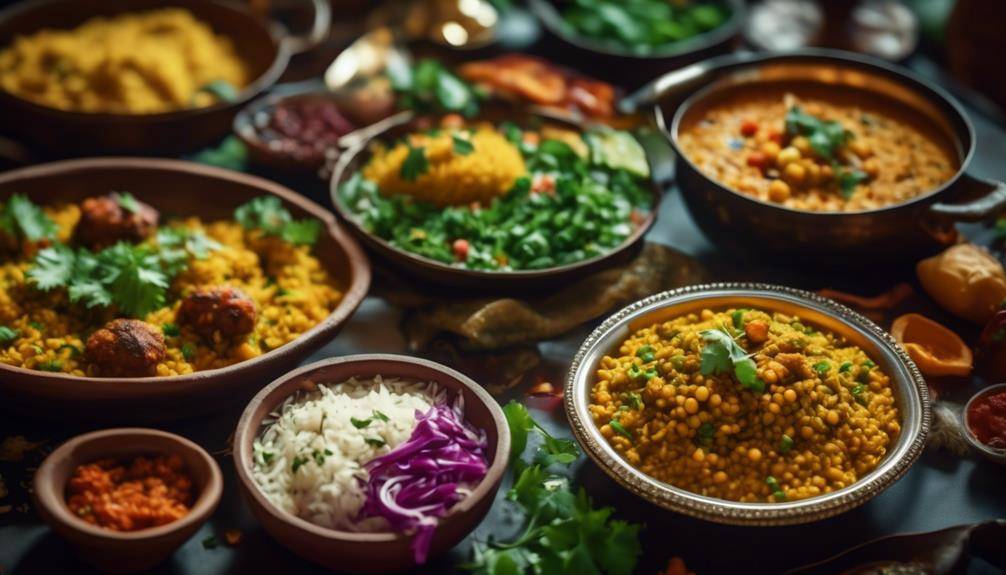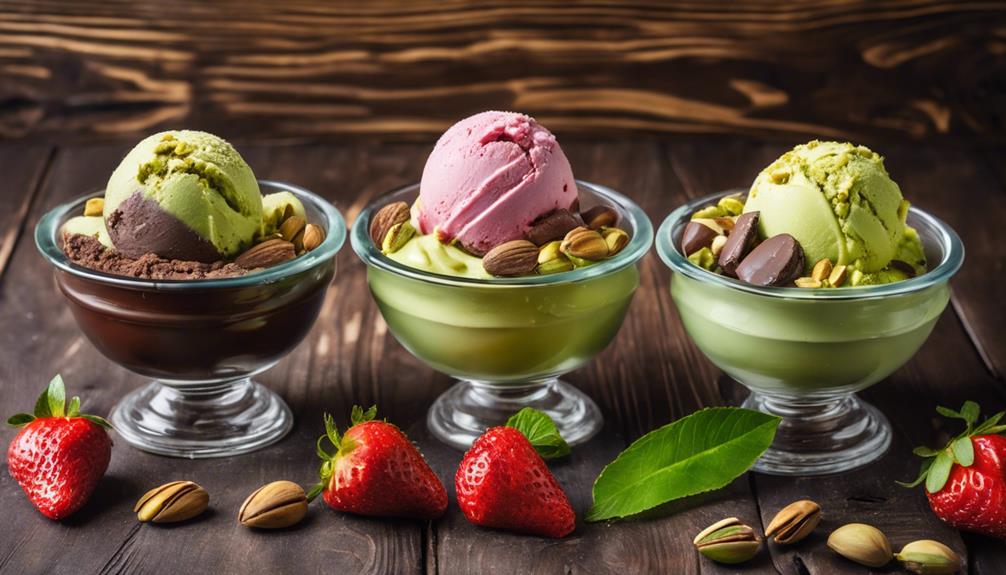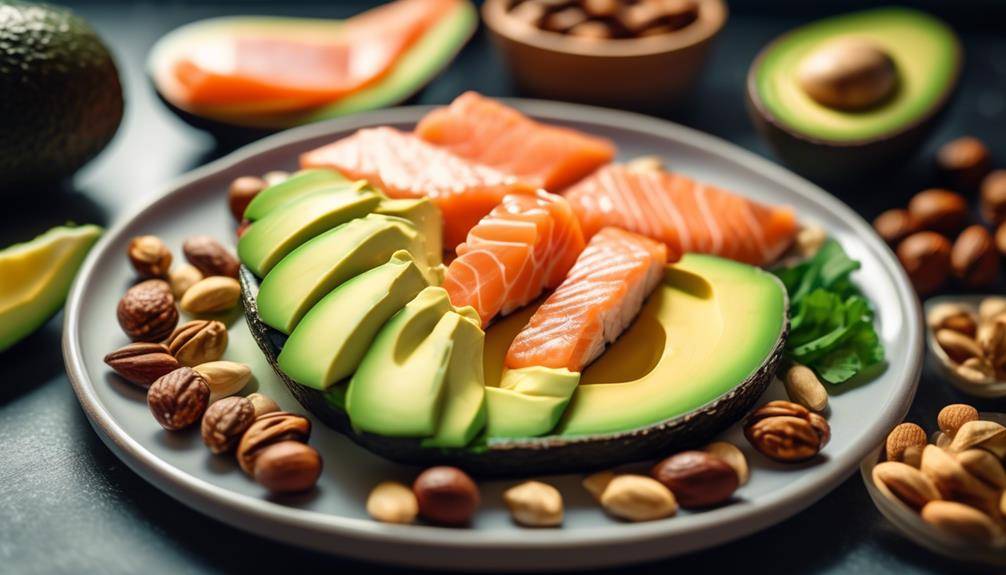Popular Vegan Indian Recipes For A Healthy Diet

Vegan Indian Recipes For A Healthy Diet; Are you searching for delectable and nutritious vegan Indian recipes that will tantalize your taste buds while keeping you on track with your healthy diet? Look no further! From fragrant and spicy chana masala to creamy and nutritious saag paneer, these vegan Indian dishes are sure to satisfy your cravings without compromising your commitment to a plant-based lifestyle. But that’s not all – stay tuned to discover a hidden gem, a mouthwatering recipe that will have you begging for seconds. Get ready to embark on a culinary journey that combines the flavors of India with the goodness of veganism.
Fragrant and Spicy Vegan Chana Masala
To make Fragrant and Spicy Vegan Chana Masala, you can enhance the dish’s flavor and aroma by using a possessive noun of your choice. This popular Indian recipe is not only delicious but also packed with health benefits when made with vegan ingredients. Chickpeas, the star ingredient of chana masala, provide numerous advantages for those following a vegan diet.
Chana masala can be prepared in various ways to suit different tastes and preferences. Some variations include adding extra spices like garam masala or turmeric for added depth of flavor. You can also experiment with different vegetables such as spinach or potatoes to make the dish more nutritious and flavorful.
One of the main health benefits of chana masala lies in its inclusion of chickpeas. These legumes are an excellent source of plant-based protein, making them a valuable addition to a vegan diet. Chickpeas are also high in fiber, which aids in digestion and helps regulate blood sugar levels. Additionally, they contain essential minerals like iron, magnesium, and potassium, which are necessary for maintaining overall health.
When serving vegan chana masala, consider pairing it with steamed basmati rice or whole wheat naan bread for a complete and satisfying meal. You can also garnish it with fresh cilantro, lime wedges, or a dollop of dairy-free yogurt for added freshness and tanginess.
Creamy and Nutritious Vegan Saag Paneer
Creamy and nutritious, Vegan Saag Paneer is a delectable Indian dish that replaces traditional paneer cheese with a plant-based alternative. This vegan version of Saag Paneer offers a rich and creamy texture without compromising on taste. Here are some reasons why you should try this creamy vegan Saag Paneer and the health benefits it offers:
- Vegan Saag Paneer Alternatives: This plant-based version of Saag Paneer replaces paneer cheese with alternatives like tofu or cashew cheese. These alternatives provide a similar creamy texture and are packed with nutrients.
- Health Benefits of Leafy Greens in Vegan Saag Paneer: The star ingredient in Saag Paneer is leafy greens, such as spinach or mustard greens. These greens are rich in essential vitamins and minerals like iron, calcium, and vitamin K. They also contain antioxidants that help protect the body against oxidative stress.
- Boosts Immunity: Leafy greens in Saag Paneer are loaded with immune-boosting nutrients like vitamin C, vitamin E, and beta-carotene. These nutrients help strengthen the immune system and protect against common illnesses.
- Supports Digestive Health: Saag Paneer is often flavored with spices like cumin, coriander, and ginger, which aid digestion. Additionally, the high fiber content in leafy greens promotes healthy digestion and prevents constipation.
- Heart-Healthy: The absence of dairy in vegan Saag Paneer reduces the intake of saturated fats, which can be harmful to heart health. Instead, the plant-based alternatives used in this dish provide healthy fats that support heart health.
Delicious Vegan Aloo Gobi With Cauliflower and Potatoes
For a flavorful and satisfying dish, try making Vegan Aloo Gobi with cauliflower and potatoes. Aloo Gobi is a popular Indian dish that combines the earthy flavors of cauliflower and potatoes with aromatic spices. There are several variations of aloo gobi, but this vegan version eliminates the use of any animal products, making it suitable for those following a plant-based diet.
To cook this delicious dish, start by sautéing onions, garlic, and ginger in a pan with some oil. Then, add the spices such as turmeric, cumin, coriander, and garam masala, and cook until fragrant. Next, add the cauliflower florets and potato cubes, and coat them well with the spices. Cover the pan and let the vegetables cook until they are tender.
To enhance the flavors, you can also add some tomatoes, green peas, or even spinach to the dish. These variations will add extra nutrition and taste to your vegan aloo gobi. Serve it with steamed rice or warm roti for a complete and satisfying meal.
When cooking Indian vegan dishes like aloo gobi, there are a few tips that can help you achieve the best results. Firstly, make sure to use fresh and high-quality ingredients to enhance the flavors of the dish. Secondly, toast the spices before adding them to the dish to release their aromatic oils and enhance their flavors. Lastly, don’t be afraid to experiment with different spice combinations and ingredients to customize the dish according to your taste preferences.
Flavorful Vegan Baingan Bharta With Roasted Eggplant
If you enjoyed the delicious vegan aloo gobi, you’ll love the flavorful vegan baingan bharta with roasted eggplant. This traditional Indian dish is bursting with rich flavors and textures that will leave you craving for more. Here’s why you should give it a try:
- Variations of Roasted Eggplant: Baingan bharta is made by roasting eggplants until they are soft and charred, then mashing them and cooking them with a variety of spices. The roasted eggplant adds a smoky flavor to the dish, while also lending a creamy texture. You can experiment with different variations of roasted eggplant, such as using fire-roasted eggplants for an even more intense flavor or adding roasted bell peppers for a touch of sweetness.
- Health Benefits of Indian Spices: Indian cuisine is known for its bold and aromatic spices, and baingan bharta is no exception. The dish is typically seasoned with a blend of spices like cumin, coriander, turmeric, and garam masala. These spices not only enhance the flavor of the dish but also offer several health benefits. For example, turmeric is known for its anti-inflammatory properties, while cumin aids in digestion and coriander is rich in antioxidants.
Healthy and Satisfying Vegan Lentil Curry
To create a healthy and satisfying vegan lentil curry, start by selecting your favorite type of lentils. Lentils are a staple in Indian cuisine and are packed with nutrients that make them an excellent choice for a vegan diet. They are a great source of plant-based protein, fiber, and complex carbohydrates, making them filling and satisfying.
One of the benefits of including lentils in a vegan diet is their high protein content. Lentils contain around 18 grams of protein per cup, which is comparable to meat and dairy products. This makes them a great alternative for those looking to increase their protein intake without consuming animal products. Additionally, lentils are also rich in iron, magnesium, and folate, which are essential for maintaining good overall health.
When making a lentil curry, you can choose from a variety of lentil options such as green lentils, red lentils, or yellow lentils. Each type has its own unique flavor and texture, allowing you to experiment and find the one that suits your taste preferences.
To make your lentil curry even more satisfying, you can add vegetables like spinach, tomatoes, or bell peppers. These additions not only enhance the flavor but also provide additional vitamins and minerals. You can also experiment with different spices and herbs to further enhance the taste of your curry.
Tangy and Refreshing Vegan Lemon Rice
Get ready to tantalize your taste buds with the tangy flavor of lemon in this refreshing vegan lemon rice recipe. This easy one-pot dish is perfect for a quick and delicious meal. The combination of the zesty lemon and aromatic spices will leave you craving for more.
Tangy Lemon Flavor
The tangy and refreshing flavor of lemon is beautifully infused into this vegan lemon rice recipe, creating a delicious and zesty dish. Lemon not only adds a burst of tanginess to your meals but also offers several health benefits when included in a vegan diet.
Here are some reasons why incorporating lemon into your vegan dishes is a great idea:
- Boosts Immunity: Lemons are packed with vitamin C, which helps strengthen the immune system and fight off infections.
- Supports Digestion: The acidity of lemon juice aids in digestion by stimulating the production of digestive juices.
When it comes to vegan dressings and sauces, tangy lemon flavors can elevate your dishes to new heights. Here are a couple of ideas:
- Lemon Tahini Dressing: Blend lemon juice, tahini, garlic, and a touch of maple syrup for a tangy and creamy dressing that pairs perfectly with salads or roasted vegetables.
- Lemon Dill Sauce: Combine lemon juice, fresh dill, plant-based yogurt, and a pinch of salt for a refreshing sauce that complements grilled tofu or steamed greens.
Incorporating the tangy flavor of lemon into your vegan meals not only adds a refreshing twist but also provides numerous health benefits. So go ahead and explore the vibrant world of tangy lemon-based dressings and sauces to enhance your vegan dishes.
Easy One-Pot Recipe
If you’re looking for a quick and flavorful vegan meal, this tangy and refreshing vegan lemon rice is the perfect one-pot recipe to try. One pot meal ideas like this are not only convenient but also offer several benefits. Cooking one pot meals saves time and reduces the amount of dishes to clean up.
With this recipe, you simply need to combine rice, lemon juice, and a few spices in a pot and let it cook until the rice is tender and infused with the tangy flavors. The lemon juice adds a refreshing twist to the dish, while the spices enhance its taste. This easy one-pot recipe is not only delicious but also a great option for busy individuals who want a healthy and satisfying vegan meal in no time.
Spiced and Savory Vegan Samosas With Mint Chutney
Now let’s talk about the variety of fillings you can use for your vegan samosas. From traditional potato and pea filling to innovative combinations like spinach and tofu or lentil and carrot, the options are endless. Don’t forget to pair your samosas with a homemade mint chutney, which is quick and easy to make using fresh mint leaves, lemon juice, and a few spices.
Samosa Filling Variations
For a tantalizing twist on traditional samosas, explore these spiced and savory vegan variations that are sure to satisfy your taste buds. While the classic samosa pastry is made with refined flour, you can try using healthier alternatives like whole wheat or gluten-free pastry. These options add a nutty flavor and a boost of fiber to your samosas. Now, let’s talk about the fillings.
Get creative and experiment with different ingredients to elevate your samosa experience. Consider filling your samosas with a mixture of mashed potatoes and peas, or try a spicy lentil filling for a protein-packed option. These variations not only add exciting flavors but also provide a nutritious and satisfying meal. So go ahead, get adventurous with your samosa fillings and indulge in a delightful vegan treat.
Easy Homemade Mint Chutney
To enhance the flavors of your spiced and savory vegan samosas, whip up a batch of easy homemade mint chutney. Mint chutney is a popular condiment in Indian cuisine that offers a refreshing and tangy flavor to complement the richness of the samosas. Making your own mint chutney allows you to customize the taste and experiment with different variations.
You can add ingredients like coriander, lime juice, garlic, or ginger to create unique flavors. In addition to its delicious taste, mint chutney also offers several health benefits. Mint is known for its digestive properties and can help soothe indigestion and bloating. It is also rich in antioxidants and can boost your immune system. So, next time you make vegan samosas, don’t forget to whip up a batch of homemade mint chutney to take your dish to the next level.
Rich and Creamy Vegan Navratan Korma With Mixed Vegetables
If you’re craving a rich and creamy Indian dish packed with mixed vegetables, look no further than this delectable Vegan Navratan Korma. This traditional Indian recipe is made with a medley of vegetables, such as carrots, peas, bell peppers, and cauliflower, cooked in a luscious cashew and coconut-based sauce. Here are some discussion ideas to explore the vegan alternatives for traditional Indian dishes and tips for incorporating more vegetables into Indian cuisine:
- Vegan alternatives for traditional Indian dishes:
- In this Vegan Navratan Korma recipe, the creaminess usually provided by dairy is achieved by using cashews and coconut milk. These plant-based alternatives not only add richness to the dish but also make it suitable for vegans.
- Paneer, a popular Indian cheese, can be substituted with tofu or tempeh to make it vegan-friendly. These alternatives provide a similar texture and absorb the flavors of the spices used in Indian cooking.
- Tips for incorporating more vegetables into Indian cuisine:
- Indian cuisine is known for its vibrant flavors and aromatic spices. Adding a variety of vegetables to dishes like curries, biryanis, and stir-fries not only enhances the nutritional value but also adds different textures and colors to the plate.
- Experiment with different combinations of vegetables to create a balanced and visually appealing dish. For example, you can mix root vegetables like potatoes and carrots with leafy greens like spinach or kale to create a well-rounded meal.
Easy and Quick Vegan Tofu Tikka Masala
Get ready to savor the flavors of India with this easy and quick Vegan Tofu Tikka Masala. If you’re looking for tofu alternatives for tikka masala, you’ll be delighted to know that tofu can be a great substitute for chicken in this traditional Indian dish. Tofu is a versatile ingredient that absorbs flavors well and provides a rich and hearty texture.
To make Vegan Tofu Tikka Masala, start by marinating the tofu in a mixture of spices, such as turmeric, cumin, and paprika, along with yogurt or a vegan yogurt alternative. This will infuse the tofu with a delicious blend of Indian flavors. Next, pan-fry the tofu until it’s golden and crispy on the outside, giving it a satisfying texture.
Once the tofu is cooked, it’s time to make the tikka masala sauce. This creamy and flavorful sauce is typically made with a tomato base, along with spices like garam masala, coriander, and fenugreek. To keep it vegan, you can use coconut milk or cashew cream as a dairy-free alternative to the traditional cream.
Now, for the creative ways to use tofu in Indian cuisine. Besides tikka masala, you can also use tofu in dishes like tofu curry, tofu saag, or even tofu biryani. Tofu can be cubed, sliced, or crumbled to add protein and texture to your favorite Indian recipes. It’s a fantastic plant-based option that can easily replace meat in many traditional dishes.
Delectable Vegan Coconut Curry With Chickpeas and Spinach
Get ready to savor the flavors of a flavorful coconut curry that will leave you craving more. This delectable vegan dish combines the richness of coconut milk with the heartiness of chickpeas and the freshness of spinach. Not only is it incredibly delicious, but it also provides a nutritious combination of protein, fiber, and vitamins.
Flavorful Coconut Curry
Experience the delightful flavors of a vegan coconut curry, packed with nutritious chickpeas and vibrant spinach. This flavorful dish combines the creaminess of coconut milk with the earthiness of Indian spices, creating a harmonious blend of tastes that will tantalize your taste buds. Here are two variations of coconut curry with different vegetables that you can try:
- Cauliflower and Potato Curry: The combination of tender cauliflower florets and soft potatoes adds a satisfying texture to the curry. The cauliflower absorbs the flavors of the spices beautifully, while the potatoes provide a comforting element to the dish.
- Mixed Vegetable Curry: This curry is a medley of colorful vegetables like bell peppers, carrots, and peas, adding a burst of freshness to the dish. The different vegetables complement each other, creating a visually appealing and flavorful curry.
To achieve the perfect balance of flavors in a coconut curry dish, consider these tips:
- Use a combination of spices: A blend of cumin, coriander, turmeric, and garam masala will enhance the taste of the curry.
- Adjust the level of heat: Add chili powder or chopped green chilies according to your spice tolerance.
- Balance the sweetness: Coconut milk can be naturally sweet, so add a squeeze of lime or lemon juice to balance the flavors.
- Garnish with fresh herbs: Chopped cilantro or mint leaves add a refreshing touch to the curry.
With these tips and variations, you can create a flavorful coconut curry that will leave you craving for more.
Nutritious Chickpea and Spinach
Indulge in the rich and satisfying flavors of a delectable vegan coconut curry with chickpeas and spinach. This nutritious dish not only tastes delicious, but it also provides several health benefits. Spinach, a key ingredient in this recipe, is packed with essential nutrients. It is an excellent source of vitamins A, C, and K, as well as minerals like iron and calcium.
Incorporating spinach into your diet can boost your immune system, promote healthy digestion, and support bone health. Chickpeas, another star ingredient, are a great source of plant-based protein and fiber. They can help regulate blood sugar levels, aid in weight management, and improve heart health. By enjoying this flavorful curry, you are not only treating your taste buds but also nourishing your body with a healthy meal option.
Vegan Indian Recipes For A Healthy Diet; Frequently Asked Questions
Can I Substitute Regular Rice With Brown Rice in the Vegan Lemon Rice Recipe?
Yes, you can substitute regular rice with brown rice in the vegan lemon rice recipe. Brown rice is a healthier choice as it is higher in fiber, vitamins, and minerals, making it beneficial for Indian cuisine.
How Long Does It Take to Roast the Eggplant for the Vegan Baingan Bharta?
Roasting the eggplant for vegan baingan bharta usually takes about 30-40 minutes. To make vegan Indian recipes quicker, preheat the oven to 400°F, poke holes in the eggplant, and roast until the skin is charred and the flesh is soft.
Can I Use Frozen Spinach Instead of Fresh Spinach in the Vegan Coconut Curry?
Yes, you can use frozen spinach in the vegan coconut curry. To properly cook frozen spinach in Indian recipes, thaw it first and squeeze out excess liquid before adding it to the curry.
What Kind of Tofu Should I Use for the Vegan Tofu Tikka Masala?
For the vegan tofu tikka masala, use firm or extra firm tofu. Press it to remove excess moisture before marinating. Substitutes for paneer in vegan Indian dishes include tofu, cashew cheese, or even vegetables like cauliflower.
Is It Possible to Make the Vegan Samosas Gluten-Free?
Yes, it is possible to make gluten-free vegan samosas. Use gluten-free flour for the dough and fill them with a mixture of vegetables and spices. Experiment with different gluten-free flours to find the best texture.
Conclusion
Incorporating vegan Indian recipes into your diet can provide a healthy and flavorful way to enjoy plant-based meals. From fragrant Chana Masala to creamy Saag Paneer, these recipes are packed with nutritious ingredients like lentils, vegetables, and spices. Whether you’re looking for a quick and easy meal or a rich and satisfying curry, these vegan dishes offer a variety of options to suit any taste preference. Try these recipes to add a flavorful twist to your healthy eating journey.








